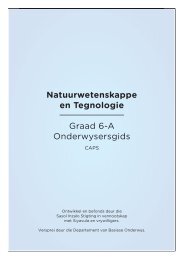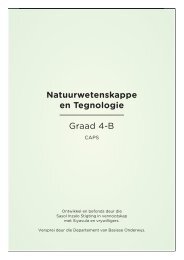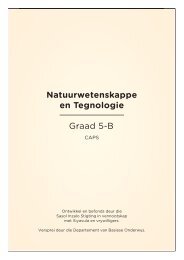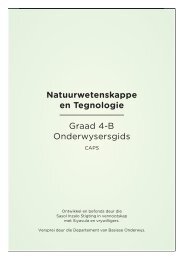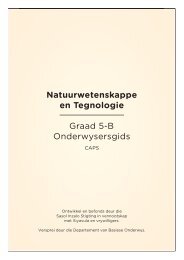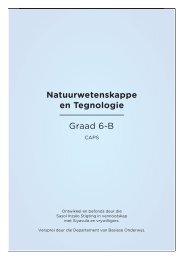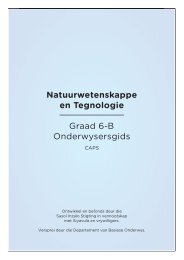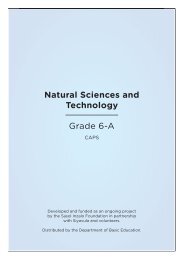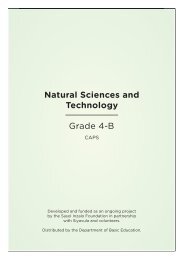Natural Sciences and Technology Grade 5-B ... - Thunderbolt Kids
Natural Sciences and Technology Grade 5-B ... - Thunderbolt Kids
Natural Sciences and Technology Grade 5-B ... - Thunderbolt Kids
You also want an ePaper? Increase the reach of your titles
YUMPU automatically turns print PDFs into web optimized ePapers that Google loves.
Do you know where this is in South Africa? Look it up on amap!<br />
These fossils are more than 3000 million years old! That is very,<br />
very old. They look like blue-green bacteria.<br />
QUESTION<br />
What are bacteria? Find out <strong>and</strong> write a short explanation<br />
below.<br />
Bacteria is alarge group of microorganisms made up of only<br />
one cell. They are microscopic <strong>and</strong> some cause disease.<br />
Earliest plants<br />
Do you know where Grahamstown is in the Western Cape?<br />
Grahamstown is famous in the archaeological world for having<br />
some of the oldest <strong>and</strong> best preserved fossils of early plants from<br />
millions of years ago.<br />
Look at the shape of Africa <strong>and</strong> South America on the classroom<br />
globe. The shapes could fit together like in this picture below. This<br />
diagram shows how scientists think the continents of Earth used to<br />
look millions <strong>and</strong> millions of years ago. This was called Pangaea.<br />
A South African scientist thought that perhaps Africa <strong>and</strong> South<br />
America had been joined together long ago. But nobody knew if<br />
this was true.<br />
Then scientists found fossils of aplant called Glossopteris in rocks<br />
in South Africa <strong>and</strong> they found fossils of the same plant in South<br />
America. This made more people think that perhaps Africa <strong>and</strong><br />
South America were once joined, very long ago. The image below<br />
shows how scientists think the plant Glossopteris used to grow in<br />
the world, in the dark green.<br />
Pangaea, showing the distribution of Glossopteris in dark<br />
green.<br />
154 Earth <strong>and</strong> Beyond



